Au sommet du G20, qui s'est tenu du 14 au 16 novembre en Turquie, le président russe a souligné que la Russie avait présenté des exemples de financement des terroristes par des personnes physiques venant de 40 pays, y compris des pays-membres du G20.(1)
Il y a un peu moins d'un an , fin 2014 , la Russie encore annonçait son intention de quitter le réseau Swift , et la mise en place d'un réseau de transactions alternatif indépendant du réseau Swift et de ses chambres de compensation (2). Les Chinois et les Brics sont également en train de s'affranchir de ce réseau .
Qu'est ce que Swift : Swift est un fournisseur mondial de services de messageries et de transactions financières sécurisées . (3)
Il travaille avec des chambres de compensation qui gèrent les flux de manière informatisée les paiements , les contreparties . Ces chambres de compensation sont des organismes privés et les Chinois se méfient tellement des chambres de compensation Européennes que tous les nouveaux contrats de swaps de devises se sont assortis de la création de chambres de compensation spécifiques entre eux et les pays avec lesquels ces contrats sont conclus .
le «New York Times» détaillait le 23 juin 2006 comment la CIA et le département du Trésor américains ont accès depuis 2001 aux transactions bancaires internationales de milliers d'individus (citoyens américains et européens) transitant par le systèmeSWIFT. Cette coopérative bancaire qui est constituée de plus de 3.000 institutions financières situées dans 200 pays permet aux individus et aux entreprises de transférer de l'argent d'un compte à un autre. SWIFT traite quotidiennement en moyenne 11 millions de transactions financières.(4)
Voici comment l'idée d'exploiter cette base de données gigantesque a été suggérée au gouvernement américain par des membres de la communauté bancaire, qui avaient perdu un nombre élevé de leurs collègues dans les attentats. Après avoir écarté l'idée que la CIA pirate les ordinateurs de SWIFT, un accord secret fut conclu avec la coopérative, qui laissa libre accès à ses informations. Lors des premiers mois, toutes les informations contenues furent analysées, comme par exemple l'ensemble des transactions en provenance de l'Arabie Saoudite, d'où provenait la majorité des terroristes. (4)
de SWIFT, un accord secret fut conclu avec la coopérative, qui laissa libre accès à ses informations. Lors des premiers mois, toutes les informations contenues furent analysées, comme par exemple l'ensemble des transactions en provenance de l'Arabie Saoudite, d'où provenait la majorité des terroristes. (4)
Aujourd'hui , comme le dit Jean Claude Paye dans l'article cité ci-dessus, les transactions financières internationales , sauf celles des pays exclus du réseau comme le fut l'Iran ou celles des pays qui ne veulent pas s'y inscrire ou qui s'en désinscrivent , comme la Chine et la Russie , sont TOUTES contrôlées par l'administration américaine .
Ce sont ces chambres de compensation dont la plupart sont aux mains des financiers américains et le réseau associé qui est désormais lui même contrôlé par l'administration américaine qui donnent les possibilités d'un contrôle quasi absolu . C'est par ce biais que la BNP a eu l'année dernière une amende de plusieurs milliards , la chambre de compensation ayant indiqué à l'administration américaine des transactions à destination de pays sous embargo (5)
Dans l'organisation actuelle de l'Etat Islamique , il y a quelque chose d'assez étonnant : il a conservé les banques sur lesquelles il a mis la main . Et il vit pour grande partie des revenus pétroliers dont il est difficile d'imaginer qu'ils se règlent tous en or ou en liasses de billets , comme d'ailleurs les livraisons de blé ou d'antiquités volés sur les sites syriens ou Irakiens , surtout avec les contrôles mis en place par les différents gouvernements occidentaux sur les transactions en liquide.
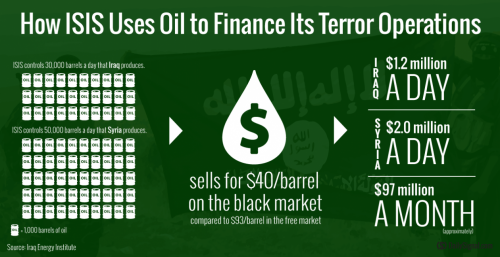
Donc ils se règlent via des virements bancaires , gérés par des chambres de compensation , qui établissent les contreparties .. et ces chambres de compensation savent également très bien ce qui se passe en Turquie, au Qatar et en Arabie Saoudite .. puisque comme l'explique l'article de Jean Claude Paye ci dessus après les attentats de 2001 , l'administration américaine a utilisé ces informations pour trouver les origines des fonds d'Al Queida .
On peut trouver également d'autres exemples des rôles joués par ces chambres de compensation .. dans les multiples rôles joués par Clearstream devenue Euroclear .
Un exemple :
Un autre exemple d'utilisation de Cedel a lieu dans l'affaire des otages de l'ambassade des États-Unis à Téhéran. Rappelons-en le contexte : les sondages donnaient le président sortant, Jimmy Carter, au coude à coude avec Ronald Reagan. Une libération des otages avant le jour des élections signifiait la quasi réélection du premier. Reagan négocia discrètement avec les ayatollahs une libération ultérieure, en échange de titres et d'armes permettant à l'Iran de se mesurer à l'Irak. L'envoi des titres ne pouvait se réaliser qu'en multipliant des mouvements financiers fractionnés et transitant par des pays tiers pour mieux se dissimuler. C'est ainsi que Backes reçut l'ordre des Banques Centrales américaine et anglaise de prélever 7 millions de dollars sur des comptes détenus par deux grandes banques privées étasuniennes dans des paradis fiscaux et de les transférer à la Banque Nationale d'Algérie, jouant le rôle de centralisateur des fonds destinés aux Iraniens. En l'absence de ses supérieurs et dans l'impossibilité d'obtenir l'accord des titulaires des comptes à débiter, Backes transgressa les règles et obtempéra : les otages furent libérés le surlendemain...(6)
Comme le dit Attac se basant sur le livre de Denis Robert lors : Révélations
Il nous a semblé important de revenir sur le mécanisme utilisé par les grandes banques, par les banques centrales des États puis directement par les multinationales, pour faire transférer leurs valeurs mobilières autour de la planète pratiquement instantanément.
le monde entier a pu se rendre compte que les chambres de compensation permettaient, entre autre, au crime organisé de blanchir les énormes quantités d'argent liquide provenant de leurs différents trafics de drogue, d'armes, d'êtres humains ainsi que du racket et de la prostitution. (6).
Cette absence de recherches du côté financier a d'ailleurs déjà étonné plusieurs personnes.
"Daech", l'enquête d'Arte : mais que font les banques ? Il faut taper là où ça fait mal
Pas de sanction ? C'est incompréhensible
Les reportages diffusés sur Arte ce mardi soulèvent autant de questions qu'ils offrent quelques réponses. Même si selon ces journalistes, Daech ne dépend plus aujourd'hui de financements extérieurs et est devenue totalement autonome, il n'en reste pas moins que par l'intermédiaire des établissements situés sur son territoire, l'organisation accède également aux réseaux bancaires internationaux.
Comment est-il donc possible que ces mêmes banques, nouvelles puissances mondiales qui semblent désormais prendre le pas sur le pouvoir politique, décidant même de nos réformes à mettre en place, n'aient pas encore fermé les robinets de l'EIL, et vidé les comptes de cette multinationale qu'est devenue Daech ?
Dans la mesure où cet état autoproclamé, qui n'est rien d'autre qu'une entreprise criminelle sous couvert de foi, n'a donc aucune légitimité il est incompréhensible qu'elle puisse jouir des réseaux bancaires internationaux et se donner ainsi une dimension étatique et une légitimité.
Sur ce point, la réponse comme le silence de Jean-Charles Brisard sont à la fois édifiants et inquiétants :
"- Ce qui est intéressant, c'est qu'ils ont maintenu l'architecture des banques. On estime qu'ils contrôlent à peu près 24 banques et branches bancaires à la fois en Irak et en Syrie. Et ce qui est étonnant est que ces banques fonctionnent toujours à l'heure où on parle, ces banques effectuent toujours des transactions internationales.
- Y a pas de sanction ?, demande le journaliste.
- Y a pas de sanction, pour l'instant", répond Jean-Charles Brisard.
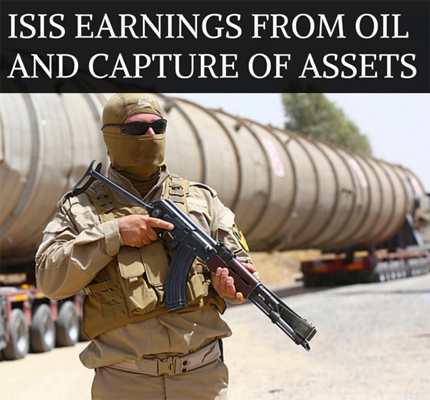 Donc nous nous trouvons dans un contexte ou des attentats immondes se produisent sur notre sol , via un mouvement ou une organisation dont les financements sont tout à fait identifiables par ceux qui en ont les moyens , du fait en particulier de leurs relations suivies avec les pays soupçonnés de continuer à aider ce mouvement : la Turquie, le Qatar , l'Arabie Saoudite ..
Donc nous nous trouvons dans un contexte ou des attentats immondes se produisent sur notre sol , via un mouvement ou une organisation dont les financements sont tout à fait identifiables par ceux qui en ont les moyens , du fait en particulier de leurs relations suivies avec les pays soupçonnés de continuer à aider ce mouvement : la Turquie, le Qatar , l'Arabie Saoudite ..
Qui sont capables d'estimer le montant des livraisons pétrolières de cette même organisation grâce à une société américaine du nom d'IHS qui travaille en relations directes avec l'administration américaine (8)
Dont les enjeux vont visiblement bien au delà de la simple destruction de cet Etat Islamique:
L'enjeu des gazoducs (9)
Les tracés des pipelines en compétition pour l'importation du Gaz de la Caspienne et du Moyen-Orient jusqu'à l'Europe du sud-est
Il semble qu'il existe d'autres intérêts aux objectifs US que de disposer du pétrole syrien. Les américains cherchent également à contrôler le débit du pétrole ainsi que ses ventes à d'autres nations ce qui est bien plus important pour atteindre une hégémonie globale. Leur objectif pourrait également aussi concerner davantage les réserves gazières d'Iran et de Russie que leur intérêt pour le pétrole syrien.
The Guardian déclare :
En 2009... Assad refusa de signer une proposition d' accord avec le Qatar qui proposait de construire un pipeline partant de ses champs du nord, contigus aux champs pétrolifères iraniens de South Pars et traversant l'Arabie Saoudite, la Jordanie, la Syrie puis la Turquie en vue de fournir les marchés européens, tout en contournant tout particulièrement la Russie. La logique d'Assad consistait à « protéger les intérêts de son allié russe », qui est le premier fournisseur de gaz naturel en Europe.
Au lieu de cela, l'année suivante, Assad a poursuivi les négociations en faveur d'un plan alternatif de 10 millions de dollars avec l'Iran pour la construction d'un pipeline qui passerait par l'Irak et la Syrie et qui permettrait potentiellement à l'Iran de fournir à l'Europe du gaz issu de ses champs de South Pars partagés avec le Qatar. Le protocole d'entente (MoU) mis en place pour le projet fut signé en juillet 2012 – juste au moment où la guerre civile syrienne gagnait Damas et Alep – et précédemment cette année, l'Irak signait un accord cadre pour la construction des pipelines de gaz. Le projet de pipeline Iran/Irak/Syrie fut un camouflet au regard des plans qatari.
Le projet de pipeline prévu par l'Iran, l'Irak et la Syrie passant par la côte syrienne et dans la Méditerranée au long de laquelle la Russie est présente, permettrait un contrôle russe sur la production et le débit du gaz iranien atténuant ainsi les rivalités entre les divers pays concernés.
L'intérêt du Qatar à financer l'insurrection avait pour objectif de renverser la Syrie et d'installer une opposition malléable qui signerait l'accord qatari sur le pipeline. La Turquie, l'Arabie Saoudite et la Jordanie avaient elles aussi tout intérêt à ce que ce plan aboutisse. Cette opération répondait aux objectifs américains de casser et d'affaiblir l'influence russe sur l'Europe.
Et on voudrait nous faire croire qu'ils ne peuvent pas identifier les financeurs de l'organisation en question ???
Alors quand Jean François Gayraud parle de capitalisme financier devenu criminel (10) , là on peut dire que ce capitalisme là est carrément devenu terroriste et qu'il y a aujourd'hui tous les moyens d'identifier les donneurs d'ordre, à condition bien sûr de le vouloir, ce qui ne semble visiblement pas être le cas !!!
Parce qu'en plus , il y a une autre chose dont je suis certaine : ce ne sont pas les fanatiques religieux manipulés par Daesch qui risquent de comprendre ou de créer quoique ce soit en transactions financières informatisées pour répondre à leurs propres besoins..
besoins..
Dans la tradition islamiste pure et dure la finance est "haram" .. donc interdite aux croyants . C'est la raison pour laquelle ils ont créé des banques islamiques , pour que la méthodologie financière puisse s'harmoniser avec les prescriptions coraniques qui interdisent l'usure et ce que nous appelons "le modèle de la dette" .
Et en plus ils nous prennent pour des CONS ...
1) https://francais.rt.com/international/10545-poutine-daesh...
2) http://lemondealenversblog.com/2014/11/15/la-russie-lance...
3) http://www.swift.com/products_services/clearing_overview?...
4) http://webduweb.free.fr/swift.htm
(5) http://www.lemonde.fr/les-decodeurs/article/2014/06/03/la...
6) http://www.suisse.attac.org/Clearstream-La-chambre-de
7) http://leplus.nouvelobs.com/contribution/1322550-daech-l-...
(8) http://alyaexpress-news.com/2014/10/letat-islamique-ou-is...
(9) http://reseauinternational.net/les-etats-unis-detruisent-...
10) http://www.odilejacob.fr/catalogue/sciences-humaines/droi...
Lucie Couvreur
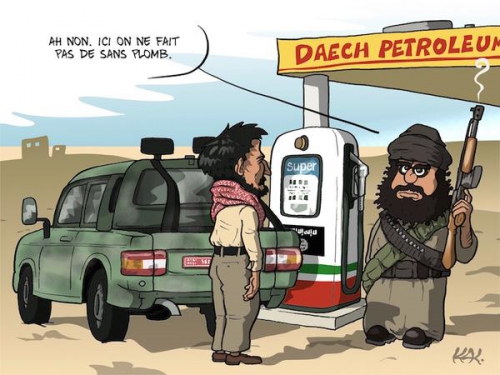


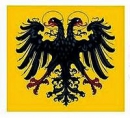
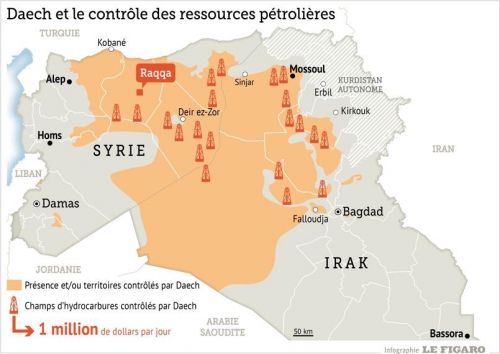


 Donc nous nous trouvons dans un contexte ou des attentats immondes se produisent sur notre sol , via un mouvement ou une organisation dont les financements sont tout à fait identifiables par ceux qui en ont les moyens , du fait en particulier de leurs relations suivies avec les pays soupçonnés de continuer à aider ce mouvement : la Turquie, le Qatar , l'Arabie Saoudite ..
Donc nous nous trouvons dans un contexte ou des attentats immondes se produisent sur notre sol , via un mouvement ou une organisation dont les financements sont tout à fait identifiables par ceux qui en ont les moyens , du fait en particulier de leurs relations suivies avec les pays soupçonnés de continuer à aider ce mouvement : la Turquie, le Qatar , l'Arabie Saoudite .. 
 del.icio.us
del.icio.us
 Digg
Digg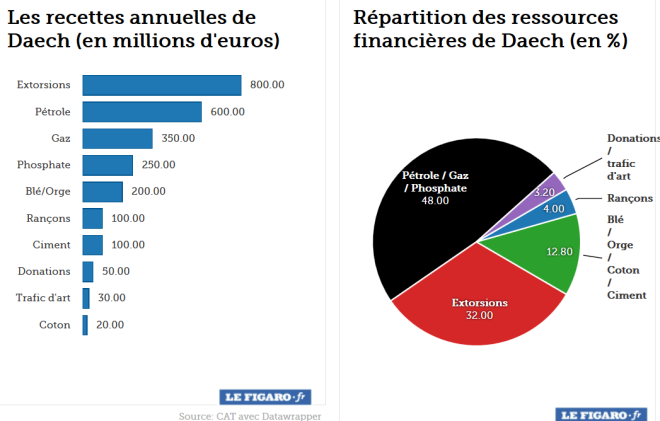
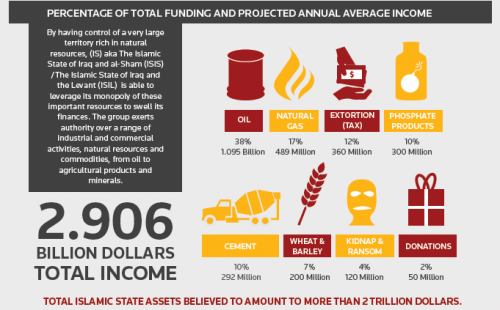
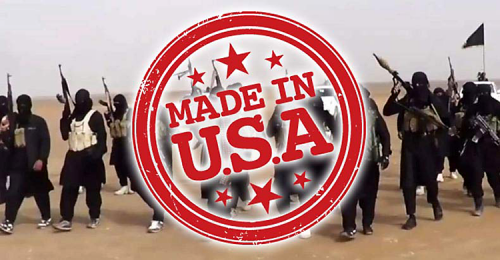
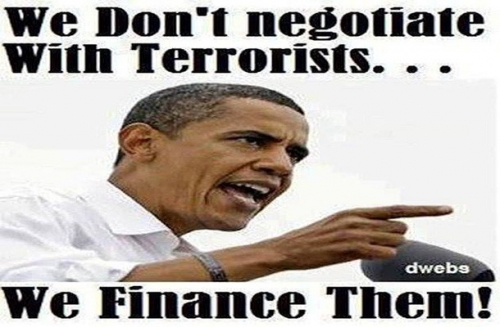
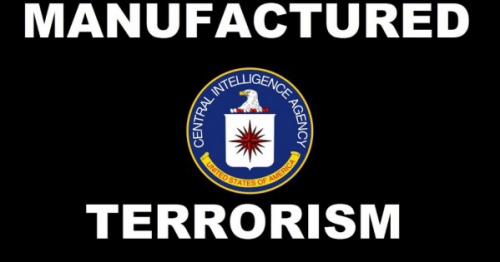
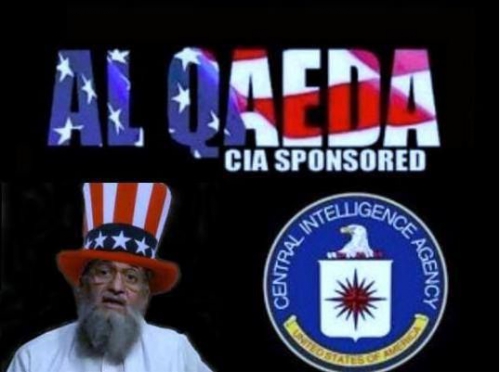
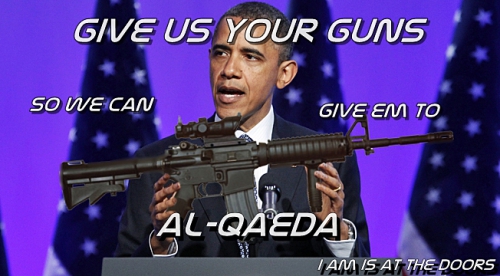
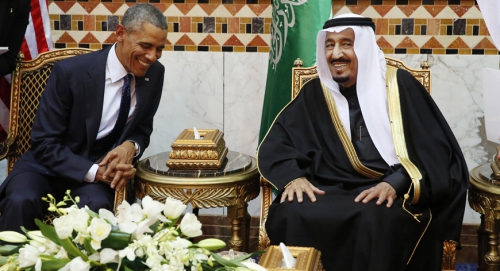
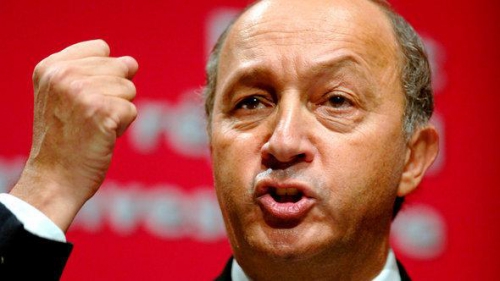
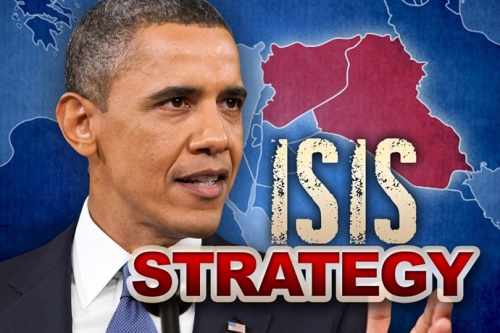
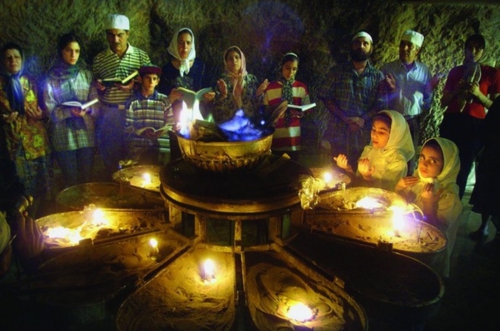
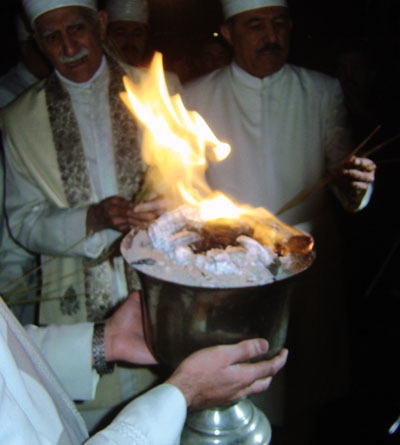
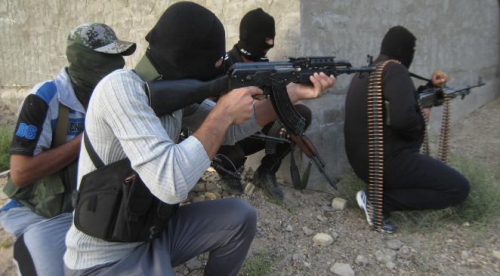
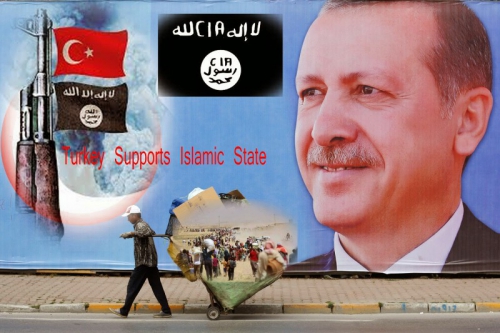
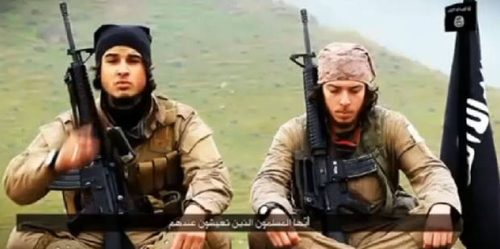
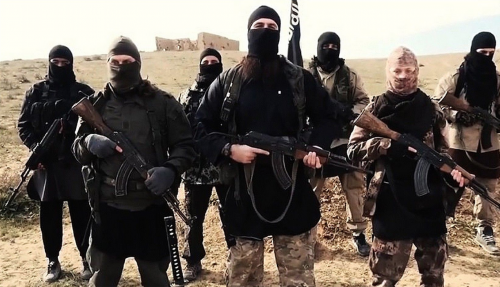

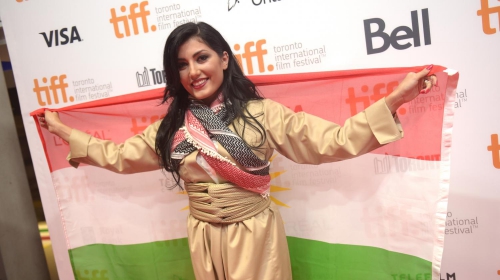
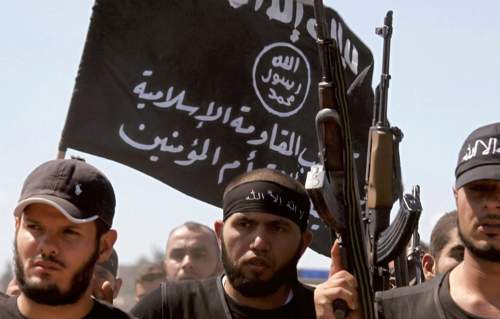
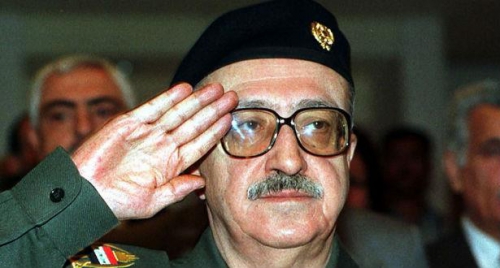
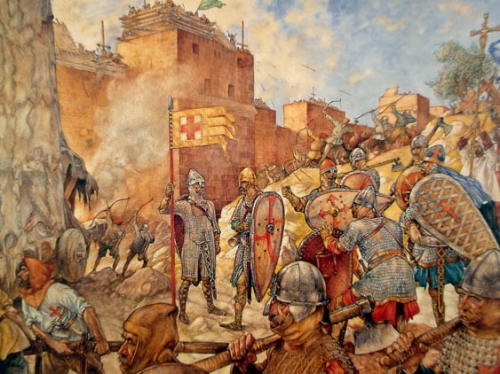
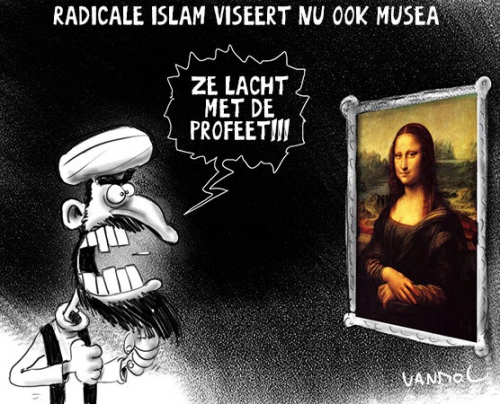
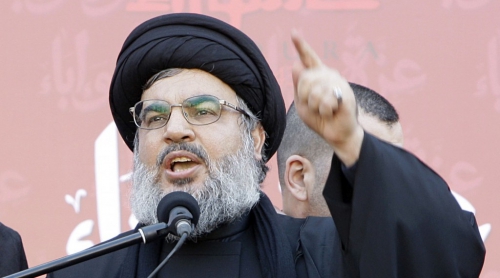
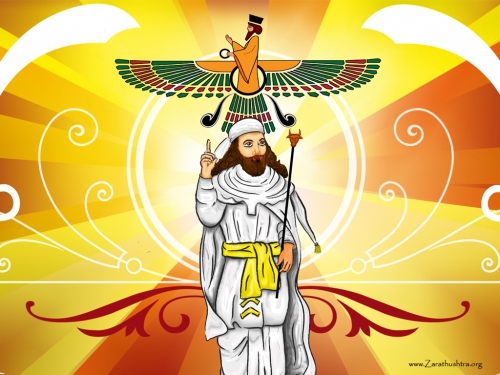
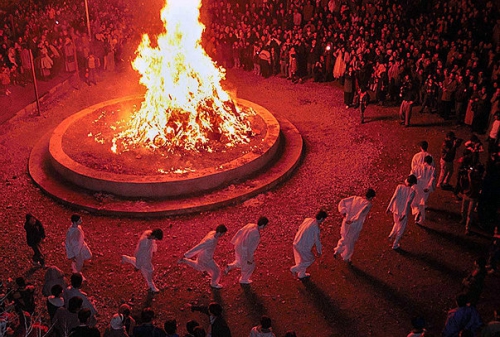
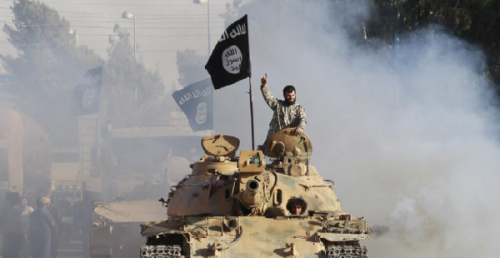
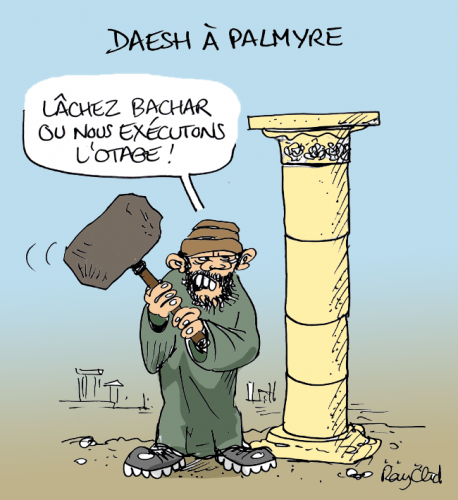
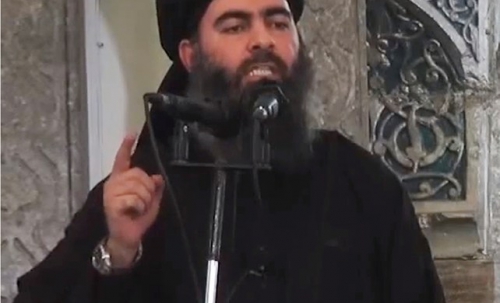
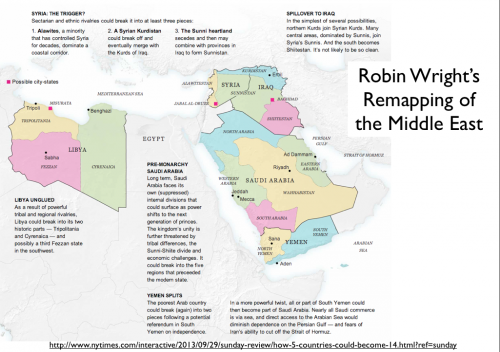
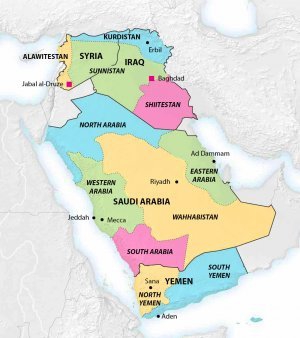 The Israelis predicted that Syrian president Bashar al-Assad would rule over what the Israelis called "Little Syria," withy effective control of only 20 to 30 percent of the country. The Israelis saw the remainder of Syria in the hands of jihadist groups like the Islamic State and Jabhat al-Nusra, with smaller cantons in the hands of Syrian Kurds and non-jihadist Sunni tribes, all of which would be fighting each other, as well as against the Assad government. The report supported Israel enhancing its position in the Golan Heights. In fact, Israel has done much more than that. The Jewish state has actively supported logistically and with weapons and intelligence Syrian and foreign jihadists, including Jabhat al-Nusra and the Islamic State forces that have militarily engaged Assad’s forces and Lebanese Hezbollah near the Golan Heights, which remains in Israeli hands without any threat to Israel’s interests in the region from the Islamic State.
The Israelis predicted that Syrian president Bashar al-Assad would rule over what the Israelis called "Little Syria," withy effective control of only 20 to 30 percent of the country. The Israelis saw the remainder of Syria in the hands of jihadist groups like the Islamic State and Jabhat al-Nusra, with smaller cantons in the hands of Syrian Kurds and non-jihadist Sunni tribes, all of which would be fighting each other, as well as against the Assad government. The report supported Israel enhancing its position in the Golan Heights. In fact, Israel has done much more than that. The Jewish state has actively supported logistically and with weapons and intelligence Syrian and foreign jihadists, including Jabhat al-Nusra and the Islamic State forces that have militarily engaged Assad’s forces and Lebanese Hezbollah near the Golan Heights, which remains in Israeli hands without any threat to Israel’s interests in the region from the Islamic State.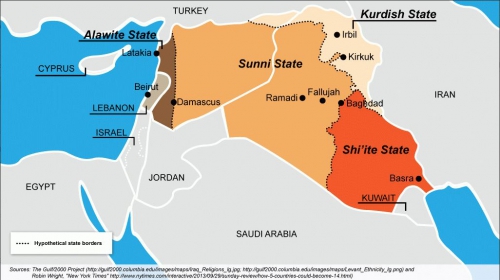
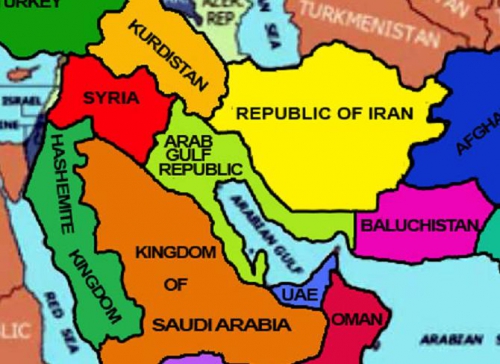
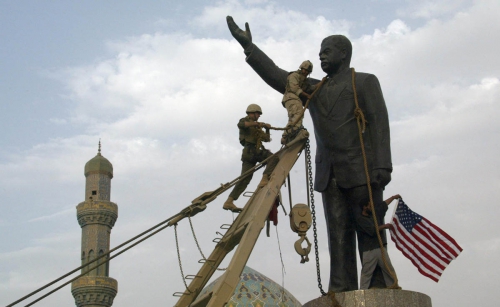
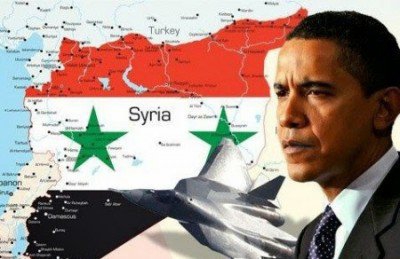 BT :
BT : 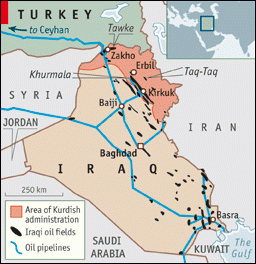 KK : Elles ont une importance cruciale. Les énormes gisements de pétrole dans le Kurdistan irakien sont la principale pomme de discorde entre le gouvernement régional des Kurdes et le gouvernement de Bagdad. En novembre, ces deux gouvernements irakiens se sont enfin entendus pour une exploitation conjointe, ce qui s’explique partiellement par la menace que fait peser l’EIIL. Quant aux gisements de gaz du bassin oriental de la Méditerranée, ils ont fait éclore les conflits entre Israël, la Turquie, la Syrie et le Liban. Les Libanais comptent nettement sur la participation des Qataris pour exploiter ces gisements mais ils ont tardé à accorder des concessions et à nommer les champs d’exploitation. Ces problèmes sont actuellement discutés au Parlement libanais. Cette problématique du gaz naturel peut à terme constituer un casus belli dans le triangle Liban/Israël/Turquie, mais aussi générer des nouvelles coopérations. L’avenir nous le dira. Mais nous pouvons d’ores et déjà constater que l’Egypte se rapproche d’Israël dans la question du gaz naturel. L’Egypte pourrait mettre ses terminaux à disposition pour liquéfier le gaz israélien. Il y a quelques mois le ministre égyptien de l’énergie avait déclaré qu’il pouvait parfaitement envisager d’importer du gaz israélien.
KK : Elles ont une importance cruciale. Les énormes gisements de pétrole dans le Kurdistan irakien sont la principale pomme de discorde entre le gouvernement régional des Kurdes et le gouvernement de Bagdad. En novembre, ces deux gouvernements irakiens se sont enfin entendus pour une exploitation conjointe, ce qui s’explique partiellement par la menace que fait peser l’EIIL. Quant aux gisements de gaz du bassin oriental de la Méditerranée, ils ont fait éclore les conflits entre Israël, la Turquie, la Syrie et le Liban. Les Libanais comptent nettement sur la participation des Qataris pour exploiter ces gisements mais ils ont tardé à accorder des concessions et à nommer les champs d’exploitation. Ces problèmes sont actuellement discutés au Parlement libanais. Cette problématique du gaz naturel peut à terme constituer un casus belli dans le triangle Liban/Israël/Turquie, mais aussi générer des nouvelles coopérations. L’avenir nous le dira. Mais nous pouvons d’ores et déjà constater que l’Egypte se rapproche d’Israël dans la question du gaz naturel. L’Egypte pourrait mettre ses terminaux à disposition pour liquéfier le gaz israélien. Il y a quelques mois le ministre égyptien de l’énergie avait déclaré qu’il pouvait parfaitement envisager d’importer du gaz israélien. 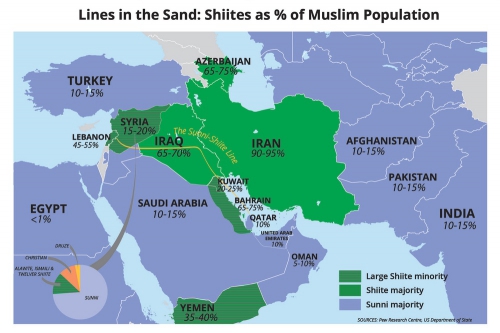
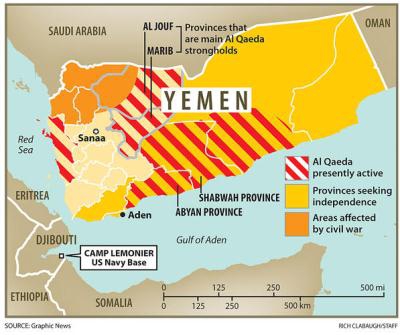 BT :
BT : 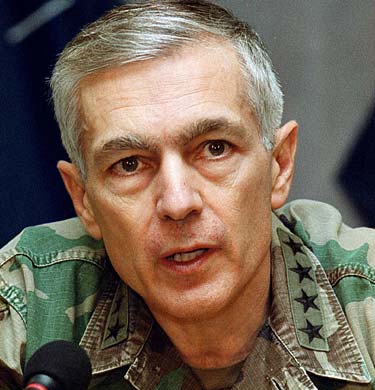 De nombreuses personnes connaissent le général Wesley Clark comme l’homme qui a quasiment déclenché la troisième Guerre mondiale, lorsqu’il a donné l’ordre aux Britanniques de tirer sur les forces de maintien de la paix russes qui avaient atterri à Pristina, la capitale du Kosovo, avant l’arrivée des Américains. On rapporte que le commandant britannique de la KFOR, le général Sir Mike Jackson, aurait répondu: «Je ne commencerai pas la troisième Guerre mondiale pour vous».
De nombreuses personnes connaissent le général Wesley Clark comme l’homme qui a quasiment déclenché la troisième Guerre mondiale, lorsqu’il a donné l’ordre aux Britanniques de tirer sur les forces de maintien de la paix russes qui avaient atterri à Pristina, la capitale du Kosovo, avant l’arrivée des Américains. On rapporte que le commandant britannique de la KFOR, le général Sir Mike Jackson, aurait répondu: «Je ne commencerai pas la troisième Guerre mondiale pour vous».
The war on terror, that campaign without end launched 14 years ago by George Bush, is tying itself up in ever more grotesque contortions. On Monday the trial in London of a Swedish man, Bherlin Gildo, accused of terrorism in Syria, collapsed after it became clear British intelligence had been arming the same rebel groups the defendant was charged with supporting.
The prosecution abandoned the case, apparently to avoid embarrassing the intelligence services. The defence argued that going ahead with the trial would have been an “affront to justice” when there was plenty of evidence the British state was itself providing “extensive support” to the armed Syrian opposition.
That didn’t only include the “non-lethal assistance” boasted of by the government (including body armour and military vehicles), but training, logistical support and the secret supply of “arms on a massive scale”. Reports were cited that MI6 had cooperated with the CIA on a “rat line” of arms transfers from Libyan stockpiles to the Syrian rebels in 2012 after the fall of the Gaddafi regime.
Clearly, the absurdity of sending someone to prison for doing what ministers and their security officials were up to themselves became too much. But it’s only the latest of a string of such cases. Less fortunate was a London cab driver Anis Sardar, who was given a life sentence a fortnight earlier for taking part in 2007 in resistance to the occupation of Iraq by US and British forces. Armed opposition to illegal invasion and occupation clearly doesn’t constitute terrorism or murder on most definitions, including the Geneva convention.
But terrorism is now squarely in the eye of the beholder. And nowhere is that more so than in the Middle East, where today’s terrorists are tomorrow’s fighters against tyranny – and allies are enemies – often at the bewildering whim of a western policymaker’s conference call.
For the past year, US, British and other western forces have been back in Iraq, supposedly in the cause of destroying the hyper-sectarian terror group Islamic State (formerly known as al-Qaida in Iraq). This was after Isis overran huge chunks of Iraqi and Syrian territory and proclaimed a self-styled Islamic caliphate.
The campaign isn’t going well. Last month, Isis rolled into the Iraqi city of Ramadi, while on the other side of the now nonexistent border its forces conquered the Syrian town of Palmyra. Al-Qaida’s official franchise, the Nusra Front, has also been making gains in Syria.
Some Iraqis complain that the US sat on its hands while all this was going on. The Americans insist they are trying to avoid civilian casualties, and claim significant successes. Privately, officials say they don’t want to be seen hammering Sunni strongholds in a sectarian war and risk upsetting their Sunni allies in the Gulf.
A revealing light on how we got here has now been shone by a recently declassified secret US intelligence report, written in August 2012, which uncannily predicts – and effectively welcomes – the prospect of a “Salafist principality” in eastern Syria and an al-Qaida-controlled Islamic state in Syria and Iraq. In stark contrast to western claims at the time, the Defense Intelligence Agency document identifies al-Qaida in Iraq (which became Isis) and fellow Salafists as the “major forces driving the insurgency in Syria” – and states that “western countries, the Gulf states and Turkey” were supporting the opposition’s efforts to take control of eastern Syria.
Raising the “possibility of establishing a declared or undeclared Salafist principality”, the Pentagon report goes on, “this is exactly what the supporting powers to the opposition want, in order to isolate the Syrian regime, which is considered the strategic depth of the Shia expansion (Iraq and Iran)”.
Which is pretty well exactly what happened two years later. The report isn’t a policy document. It’s heavily redacted and there are ambiguities in the language. But the implications are clear enough. A year into the Syrian rebellion, the US and its allies weren’t only supporting and arming an opposition they knew to be dominated by extreme sectarian groups; they were prepared to countenance the creation of some sort of “Islamic state” – despite the “grave danger” to Iraq’s unity – as a Sunni buffer to weaken Syria.
That doesn’t mean the US created Isis, of course, though some of its Gulf allies certainly played a role in it – as the US vice-president, Joe Biden, acknowledged last year. But there was no al-Qaida in Iraq until the US and Britain invaded. And the US has certainly exploited the existence of Isis against other forces in the region as part of a wider drive to maintain western control.
The calculus changed when Isis started beheading westerners and posting atrocities online, and the Gulf states are now backing other groups in the Syrian war, such as the Nusra Front. But this US and western habit of playing with jihadi groups, which then come back to bite them, goes back at least to the 1980s war against the Soviet Union in Afghanistan, which fostered the original al-Qaida under CIA tutelage.It was recalibrated during the occupation of Iraq, when US forces led by General Petraeus sponsored an El Salvador-style dirty war of sectarian death squads to weaken the Iraqi resistance. And it was reprised in 2011 in the Nato-orchestrated war in Libya, where Isis last week took control of Gaddafi’s home town of Sirte.
In reality, US and western policy in the conflagration that is now the Middle East is in the classic mould of imperial divide-and-rule. American forces bomb one set of rebels while backing another in Syria, and mount what are effectively joint military operations with Iran against Isis in Iraq while supporting Saudi Arabia’s military campaign against Iranian-backed Houthi forces in Yemen. However confused US policy may often be, a weak, partitioned Iraq and Syria fit such an approach perfectly.
What’s clear is that Isis and its monstrosities won’t be defeated by the same powers that brought it to Iraq and Syria in the first place, or whose open and covert war-making has fostered it in the years since. Endless western military interventions in the Middle East have brought only destruction and division. It’s the people of the region who can cure this disease – not those who incubated the virus.